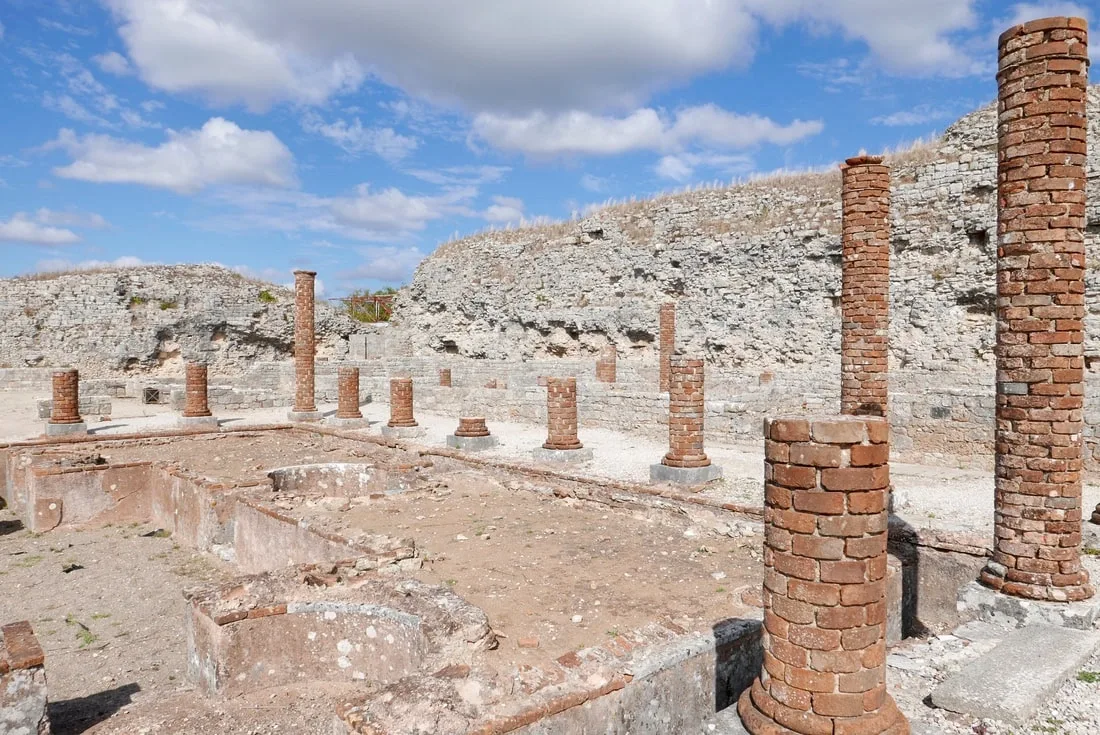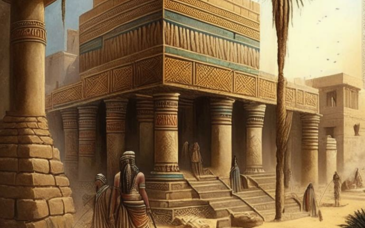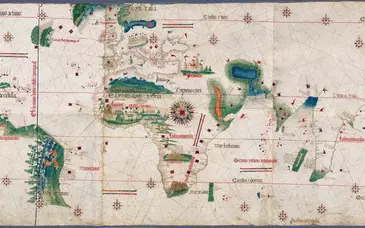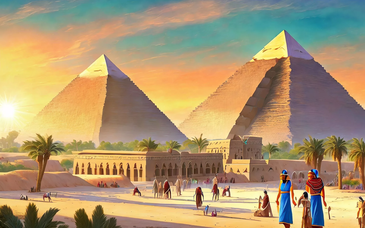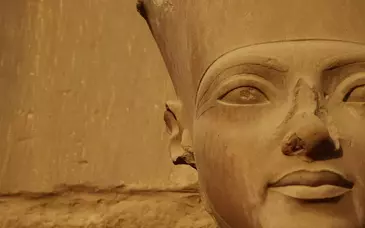Portugal’s history as an established nation is relatively recent compared to the antiquity of its lands. The region’s story begins thousands of years before Portugal existed as a country, with early human presence dating back to the Paleolithic era. Over the millennia, Portugal’s territory on the Iberian Peninsula saw successive waves of civilizations, including the Celts, Phoenicians, Carthaginians, Romans, and Visigoths, all of whom contributed to its rich cultural tapestry.
Prehistoric Beginnings: From the Paleolithic to the Neolithic (ca. 30,000 - 2,000 BCE)
The earliest traces of human habitation in Portugal date back to the Lower Paleolithic period, with tools and artifacts found in river valleys and coastal sites. Sites such as the Vale do Côa contain some of the most extensive prehistoric rock art in Europe, depicting animals, human figures, and abstract designs that provide insight into early humans' connection with their surroundings.
By the Neolithic period, around 6,000 BCE, agriculture and permanent settlements appeared, bringing substantial social changes. Evidence of this can be seen in the dolmens and menhirs scattered across the Alentejo region, such as the Cromlech of Almendres, one of the largest groups of megalithic stones in Europe. These structures suggest a complex society with spiritual and ceremonial practices centered around the natural landscape.
The Arrival of the Celts and Proto-Celtic Tribes (ca. 1,000 BCE)
The next wave of significant cultural influence came with the arrival of Indo-European Celtic tribes around the 1st millennium BCE. These tribes, including the Lusitanians, Callaeci, and others, occupied much of northern and central Portugal. Known for their warrior culture, the Lusitanians are particularly noteworthy for their fierce resistance against foreign domination, especially during the Roman conquests.
Celtic influence in Portugal can still be observed in place names, folklore, and archaeological remains of fortified villages, known as “castros.” These castros, such as Citânia de Briteiros, were typically located on hilltops, surrounded by stone walls for defense and featuring circular stone dwellings. The society within these villages had a tribal structure, with chieftains leading warrior bands and priestly classes preserving religious rites.
Contact and Trade with Mediterranean Civilizations (ca. 1,000 - 300 BCE)
While the Celts established themselves in the interior, the coastal regions of Portugal engaged with seafaring Mediterranean civilizations. The Phoenicians, skilled mariners from the Levant, were among the first to establish trading posts along the Portuguese coast. They traded metals, especially tin, a crucial component in the production of bronze. This contact with the Mediterranean allowed for cultural and technological exchanges, with local populations adopting some of the Phoenicians' practices and materials.
Following the Phoenicians, the Carthaginians established greater control over trade networks in the western Mediterranean. Their influence, however, was short-lived due to the rise of the Roman Empire, which gradually took over Carthaginian territories during the Punic Wars.
Roman Conquest and Integration (ca. 200 BCE - 400 CE)
The Roman conquest of the Iberian Peninsula began in earnest during the 2nd century BCE, leading to the subjugation of the Lusitanians and other tribes. Led by warriors like Viriathus, the Lusitanians resisted fiercely for years, creating a legend that endures in Portuguese history as a symbol of resilience. Eventually, however, the Romans secured control, incorporating the region into the Roman province of Lusitania.
Under Roman rule, Portugal flourished as part of the empire. Cities like Olisipo (modern Lisbon), Bracara Augusta (Braga), and Emerita Augusta (Mérida) became significant urban centers with well-developed infrastructure. The Romans built aqueducts, roads, and amphitheaters, integrating the Lusitanians into their vast empire. This period also marked the spread of Latin, which would become the basis for the Portuguese language.
The Pax Romana, or “Roman Peace,” allowed for economic growth, especially in agriculture and mining. Lusitania became known for its production of wheat, olives, and wine, while its mineral wealth in silver and gold attracted settlers. Roman law, architecture, and engineering left an indelible mark on Portugal, many of whose remnants are still visible today.
The Fall of Rome and the Visigothic Kingdom (ca. 400 - 711 CE)
As the Roman Empire weakened, various Germanic tribes invaded Iberia, with the Visigoths eventually establishing control over much of the peninsula, including Portugal. The Visigothic period saw the decline of urban life and the reversion to smaller, fortified settlements. While their influence was less enduring than that of the Romans, the Visigoths introduced new social structures and further spread Christianity, which had taken root during the later years of the Roman Empire.
The Visigothic era is known for its unique blend of Roman and Germanic legal traditions, as seen in the Visigothic Code. Some Visigothic churches, like the Church of São Frutuoso de Montélios, offer glimpses into the architectural style of the time, characterized by simple stone constructions with arched windows and intricate carvings.
The Arrival of the Moors and the Dawn of Reconquista (711 CE onward)
In 711 CE, the Umayyad Caliphate launched an invasion of Iberia, quickly overpowering the Visigothic forces. The Islamic conquest brought profound changes to Portugal, especially in the south, where Al-Andalus became a center of Islamic culture, science, and trade. The Moors introduced advanced agricultural techniques, new crops such as citrus and almonds, and innovations in mathematics, astronomy, and medicine.
This period also saw the development of cities like Silves and Faro, which thrived as cultural and economic hubs under Islamic rule. Architectural elements from the Moorish period, such as arches, tilework, and courtyards, became integral to Portuguese aesthetics and are still evident in southern Portugal.
The Christian Reconquista and the Formation of Portugal (11th - 12th centuries)
The Reconquista, the Christian campaign to reclaim the Iberian Peninsula, gained momentum in the 11th century. Led by figures like Afonso Henriques, Portugal declared independence from the Kingdom of León in 1139, marking the beginning of the Kingdom of Portugal. By 1249, the Portuguese had reconquered the entire region from the Moors, establishing Portugal’s modern boundaries—the first in Europe to achieve stable borders.
Portugal’s formation as an independent kingdom marked the end of its ancient era, setting the stage for its emergence as a maritime power in the Age of Discovery. The influence of earlier civilizations remained strong, with Roman, Celtic, and Moorish elements blending into a unique cultural heritage that would shape Portugal's identity for centuries to come.
Legacy of Ancient Portugal
Ancient Portugal’s history is a story of resilience, cultural synthesis, and adaptation. From the rock art of the Paleolithic era to the architectural legacies of the Romans and Moors, the echoes of these ancient civilizations are woven into Portugal’s landscape and society. The heritage of the Celts and Romans persists in language and traditions, while the architectural and agricultural advancements from the Moors enriched Portuguese culture.
Today, Portugal’s ancient sites, like Citânia de Briteiros, Conímbriga, and the Moorish Castle of Sintra, serve as reminders of the region’s complex past. This legacy of cultural diversity and exchange has profoundly influenced Portuguese art, architecture, and identity, making ancient Portugal an essential chapter in the history of Europe.
Ancient and Pre-Roman Portugal
- The Spiritual Landscape of Prehistoric Portugal
- Explore the earliest spiritual practices and sacred sites, including megalithic structures like the Almendres Cromlech and Dolmens of Anta Grande do Zambujeiro.
- Religious Significance of the Lusitanian Tribes
- Discover the beliefs and deities of the Lusitanian tribes, focusing on warrior gods like Endovelicus and Ataegina, who symbolized fertility and the afterlife.
- Celts and Proto-Christian Beliefs in Portugal
- Examine Celtic influences in Portugal and how proto-Christian ideas might have mingled with ancient animistic traditions.
- Roman Religious Influence in Lusitania
- Learn how Roman gods and religious practices were introduced to Portugal, including temples dedicated to Jupiter and Diana.
- The Roman Temple of Évora: Vestiges of Ancient Worship
- Dive into the history of Évora’s Roman temple, which remains one of Portugal’s best-preserved ancient monuments.
Christianity in Early Portugal
- The Arrival of Early Christianity in Roman Portugal
- Discuss the spread of Christianity during Roman rule and the first Christian communities in Lusitania.
- Early Christian Martyrs in Portugal
- Learn about Saint Verissimus and other early Christian martyrs who suffered persecution for their faith.
- The Transition from Paganism to Christianity
- Trace the gradual decline of pagan practices as Christianity took hold in the region, replacing ancient rituals.
- Visigothic Rule and the Rise of Christian Monasteries
- Explore the establishment of monasteries during the Visigothic period, with an emphasis on the Church of São Frutuoso in Braga.
- São Martinho de Dume and His Missionary Work
- Highlight the life and contributions of Saint Martin of Braga, a key figure in converting the local population to Christianity.
Islamic Influence and Religious Coexistence
- Religious Coexistence During Moorish Rule
- Examine how Christians, Muslims, and Jews coexisted under Islamic rule, particularly in the cities of the Algarve.
- Mosques and Islamic Religious Sites in Al-Gharb
- Delve into the architectural legacy of Moorish mosques and religious schools in southern Portugal.
- The Christian Reconquest and Religious Tolerance
- Discuss the status of Muslims and Jews in Portugal following the Christian Reconquista.
- The Chapel of São Bartolomeu in Sintra: A Site of Reconquest Symbolism
- Explore this chapel’s significance as a symbol of Christian victory over Islamic rule.
- The Legend of Saint James in the Reconquista
- Analyze the role of Saint James (Santiago) as a patron saint of the Reconquista, symbolizing Christian reclamation of Iberia.
Medieval Christianity and Monastic Foundations
- The Foundation of Alcobaça Monastery
- Discover the founding of the Cistercian Alcobaça Monastery and its influence on Portuguese religious life.
- The Role of the Knights Templar in Portugal
- Examine the Knights Templar’s establishment in Portugal and their contribution to the Christian Reconquista.
- Convento de Cristo: The Templar Legacy in Tomar
- Detail the Templar Convent of Christ in Tomar and its architectural and religious significance.
- Monastery of Santa Cruz in Coimbra
- Learn about this influential Augustinian monastery, where many Portuguese kings were educated and buried.
- Pilgrimages in Medieval Portugal
- Explore the origins of religious pilgrimages and key pilgrimage sites, such as Santiago de Compostela.
Renaissance Portugal and the Age of Exploration
- The Role of Religion in the Age of Exploration
- Understand how religion motivated Portugal’s exploration efforts, including the spread of Christianity to Africa, Asia, and the Americas.
- Jerónimos Monastery: A Tribute to Exploration and Faith
- Dive into the history of Jerónimos Monastery, built to honor the successful voyages of Portuguese explorers.
- Saint Francis Xavier and His Missionary Work
- Highlight Saint Francis Xavier’s missionary work, bringing Christianity to India and Japan as part of Portugal’s colonial efforts.
- Church of São Roque in Lisbon: The First Jesuit Church
- Explore the significance of São Roque as the first Jesuit church in Portugal, showcasing Renaissance art and relics.
- The Rise of the Jesuits in Portugal
- Discuss the impact of the Jesuits on Portuguese education, culture, and religious life.
Religious Conflict and the Inquisition
- The Establishment of the Portuguese Inquisition
- Examine the origins and effects of the Inquisition on Portugal’s religious minorities, including Jews and “New Christians.”
- Jewish Heritage in Belmonte and Castelo de Vide
- Delve into the history of Portugal’s Jewish communities and the survival of crypto-Judaism.
- The Expulsion and Forced Conversion of Jews
- Analyze the policies that led to the expulsion of Jews from Portugal and the rise of “New Christians.”
- The Legend of the Miracle of Our Lady of Guadalupe
- Discuss this miracle story that served as a symbol of faith during times of religious persecution.
- Fátima: The Beginnings of a Pilgrimage Site
- Examine the rise of Fátima as a significant pilgrimage site and the early stories of Marian apparitions in Portugal.
The Baroque Period and Religious Revival
- São Vicente de Fora Monastery: A Symbol of Baroque Portugal
- Explore the architectural grandeur and religious significance of São Vicente de Fora in Lisbon.
- Baroque Churches and Religious Art
- Detail the development of Baroque churches in Portugal and the spread of religious artwork and iconography.
- The Life and Works of Saint John of God
- Highlight the contributions of Saint John of God, who founded the Brothers Hospitallers and reformed hospital care.
- The Sanctuary of Bom Jesus do Monte
- Examine the history and Baroque features of this pilgrimage site, known for its grand stairway and religious symbolism.
- The Church of Saint Engrácia and Portugal’s National Pantheon
- Discuss the transformation of this church into the National Pantheon, housing prominent Portuguese figures.
Religious Reform and Enlightenment
- The Suppression of the Jesuits in Portugal
- Analyze the expulsion of the Jesuits and the impact of Enlightenment ideas on Portuguese religion.
- Marquis of Pombal’s Secular Reforms
- Explore Pombal’s reforms, which reduced the church’s influence in Portuguese society.
- The Legacy of Padre António Vieira
- Discuss the works of Padre Vieira, a Jesuit priest and diplomat who defended the rights of indigenous people.
- The Impact of Liberalism on Portuguese Religion
- Examine the effects of liberal movements in the 19th century on the Catholic Church and religious practices.
- Our Lady of Sorrows and Devotional Practices
- Explore how the veneration of Our Lady of Sorrows became a part of Portuguese religious culture.
Modern Portugal and Contemporary Religious Developments
- The Apparitions of Fátima and Their Global Impact
- Cover the 1917 Marian apparitions in Fátima, which turned it into a major international pilgrimage site.
- The Establishment of the Portuguese Republic and Secularism
- Discuss the 1910 republican revolution and its policies toward the separation of church and state.
- Fátima Shrine Today: A Place of Miracles and Devotion
- Detail the development of Fátima into a modern-day pilgrimage destination and the miracles attributed to it.
- The Catholic Church’s Role in the Estado Novo Era
- Analyze how the Estado Novo dictatorship aligned with the Catholic Church for political support.
- The Carnation Revolution and Religious Freedom
- Explore the impact of the 1974 revolution on religious freedom and the church’s role in a democratic Portugal.
- Church and State Relations in Modern Portugal
- Examine the evolution of church-state relations from the revolution to present day.
- Portugal’s Contemporary Pilgrimage Traditions
- Highlight Portugal’s active pilgrimage sites, such as Fátima, Santiago de Compostela, and Bom Jesus do Monte.
- Our Lady of Fátima’s Canonization and International Significance
- Discuss the canonization of Fátima’s seers and the role of this shrine in the global Catholic community.
- The Influence of Portuguese Saints in Modern Catholicism
- Explore the legacy of Portuguese saints, including Nuno Álvares Pereira and Saint Elizabeth of Portugal.
- Portugal’s Religious Landscape Today
- Analyze Portugal’s diverse religious landscape in contemporary times, including Catholicism, Protestantism, and new spiritual movements.
